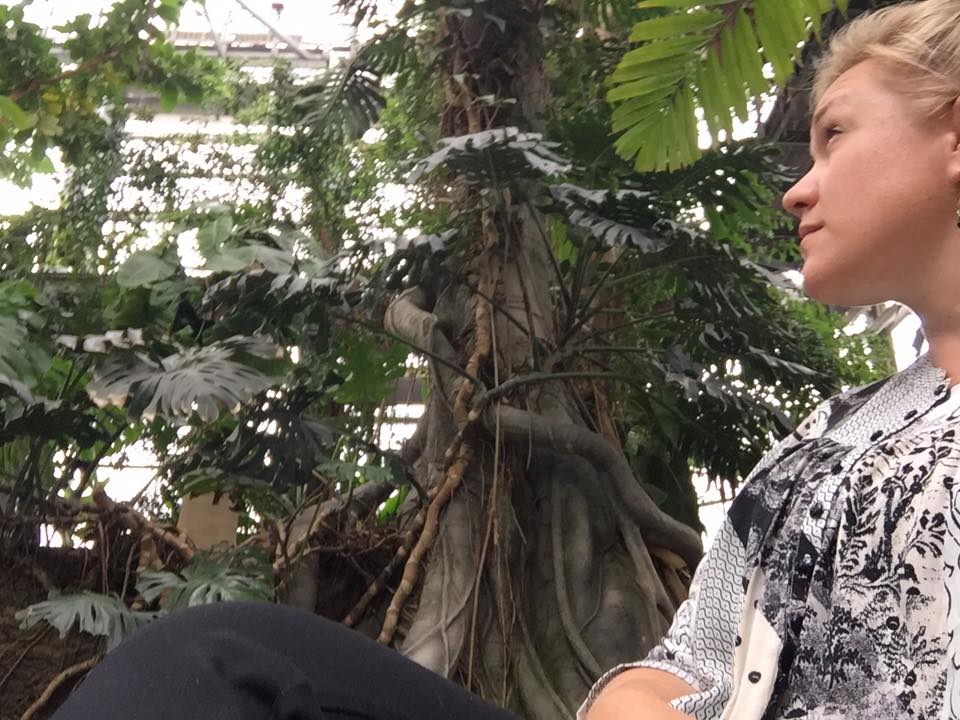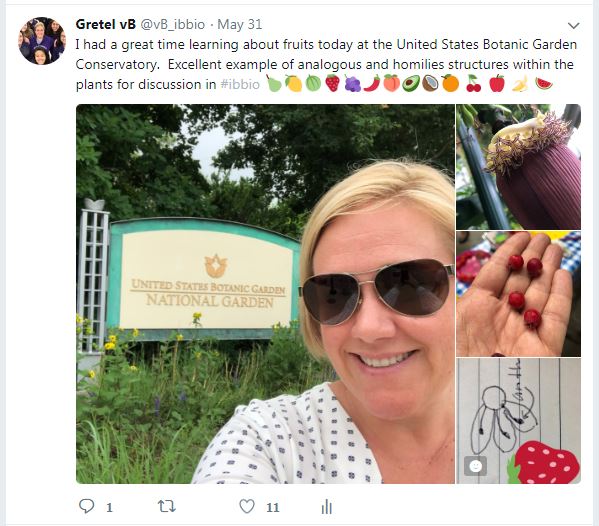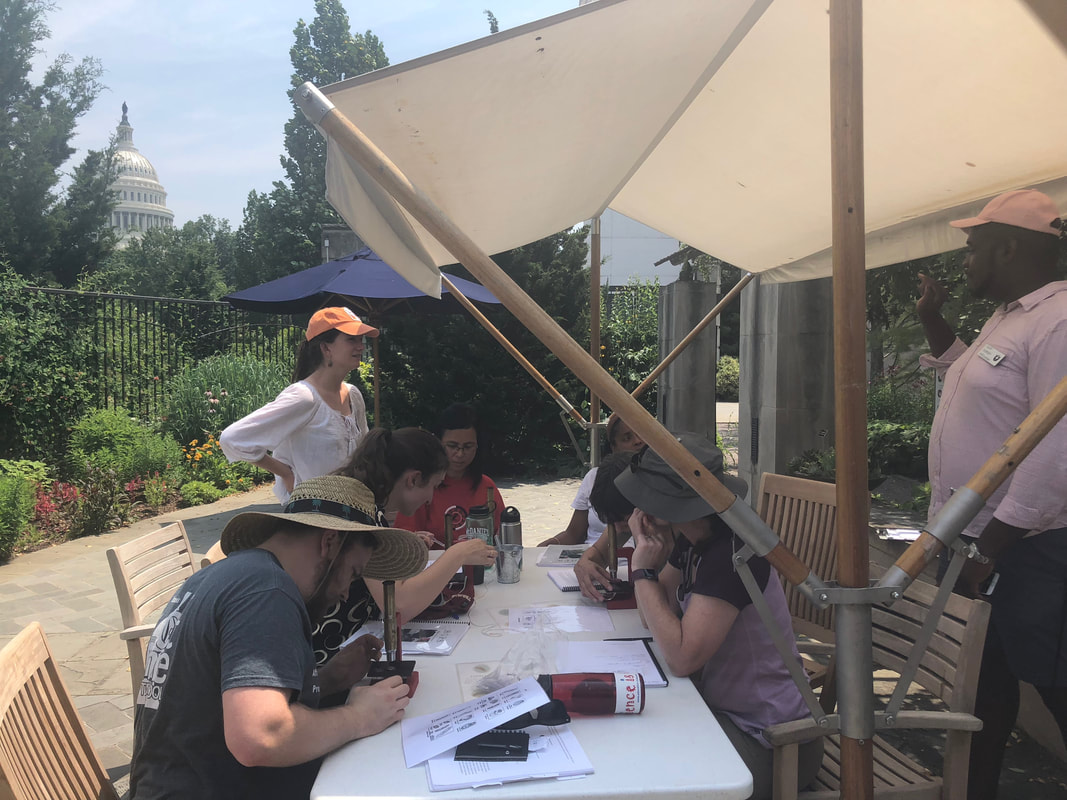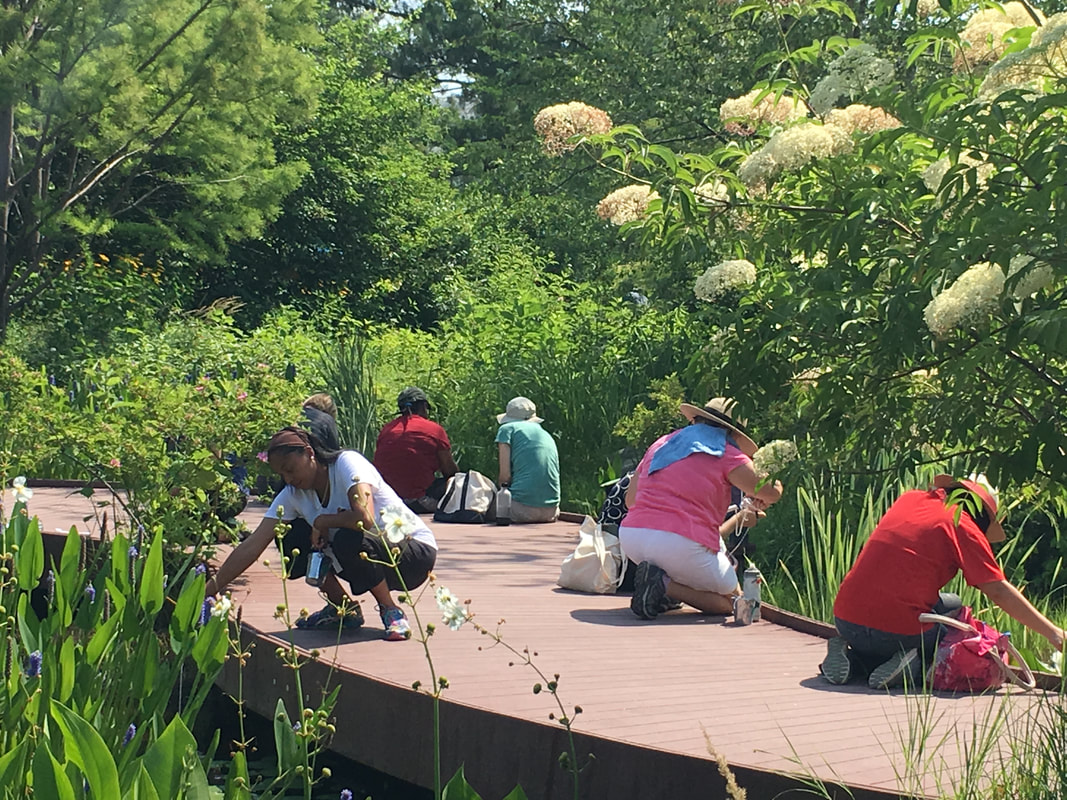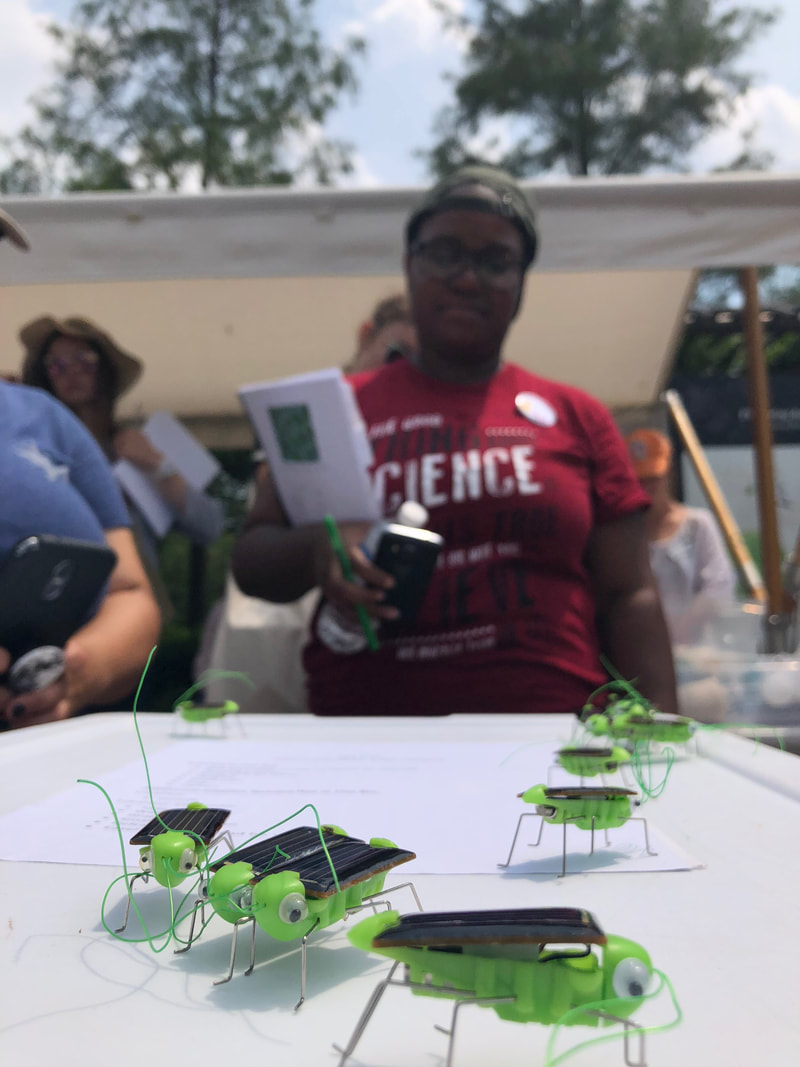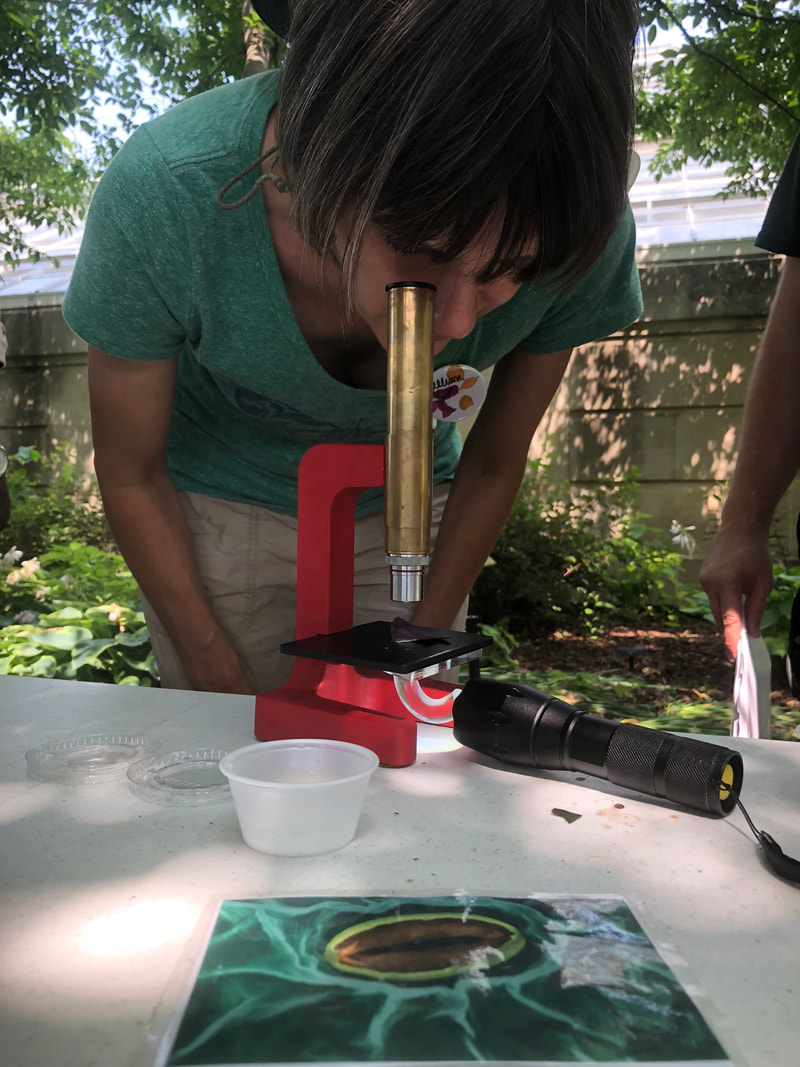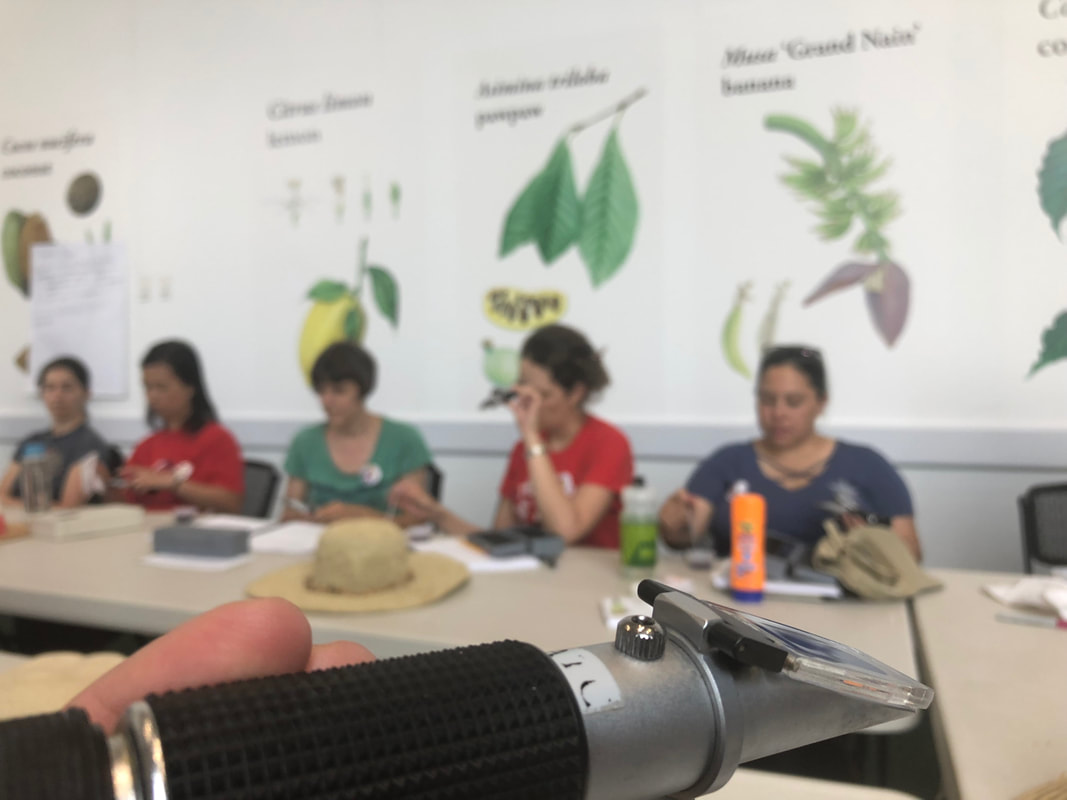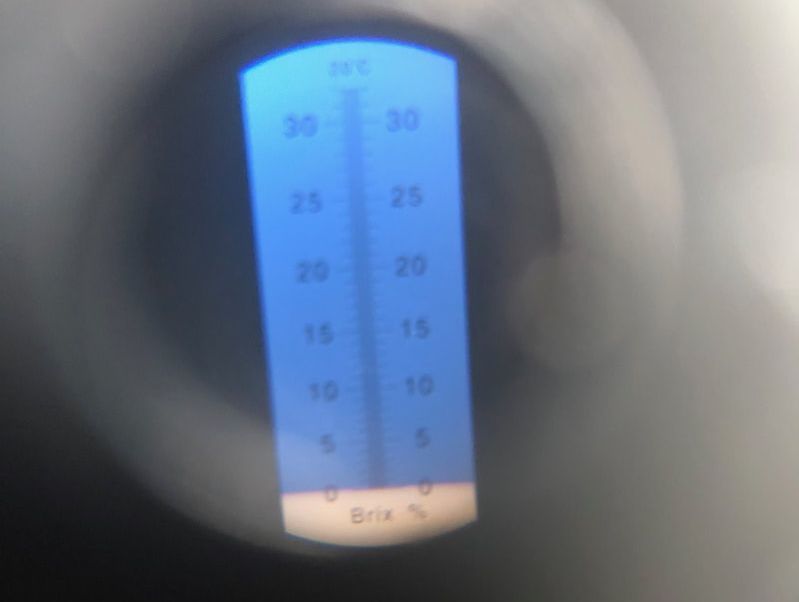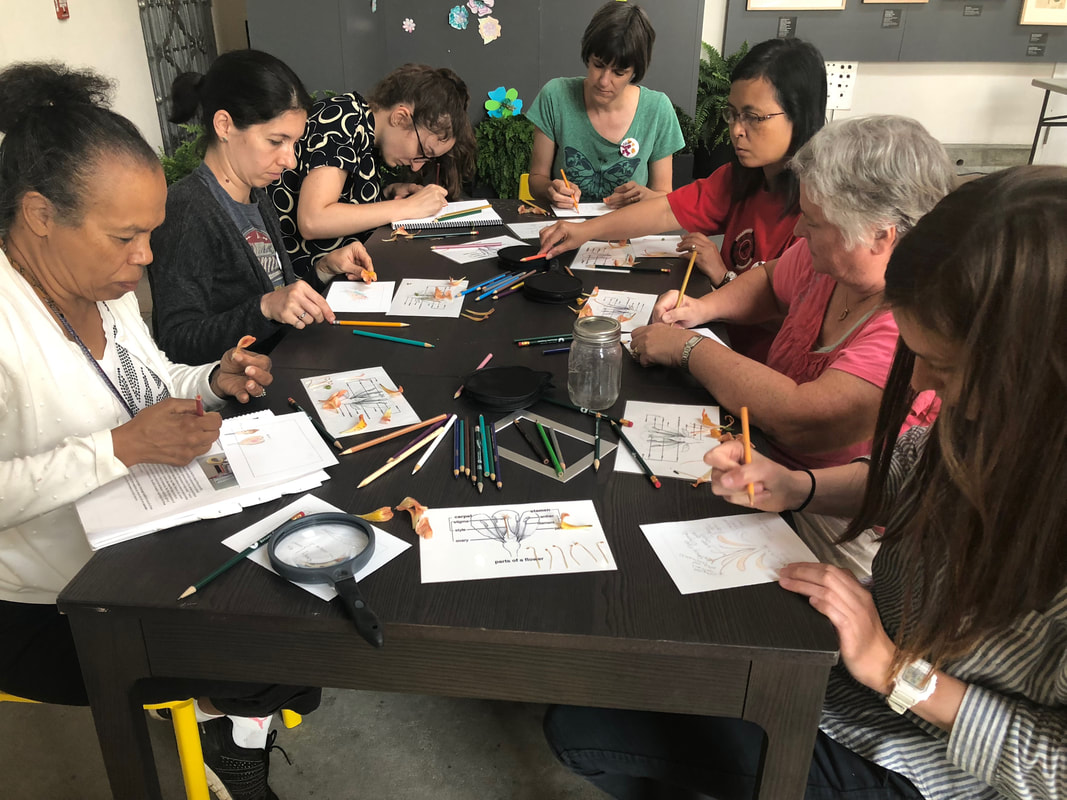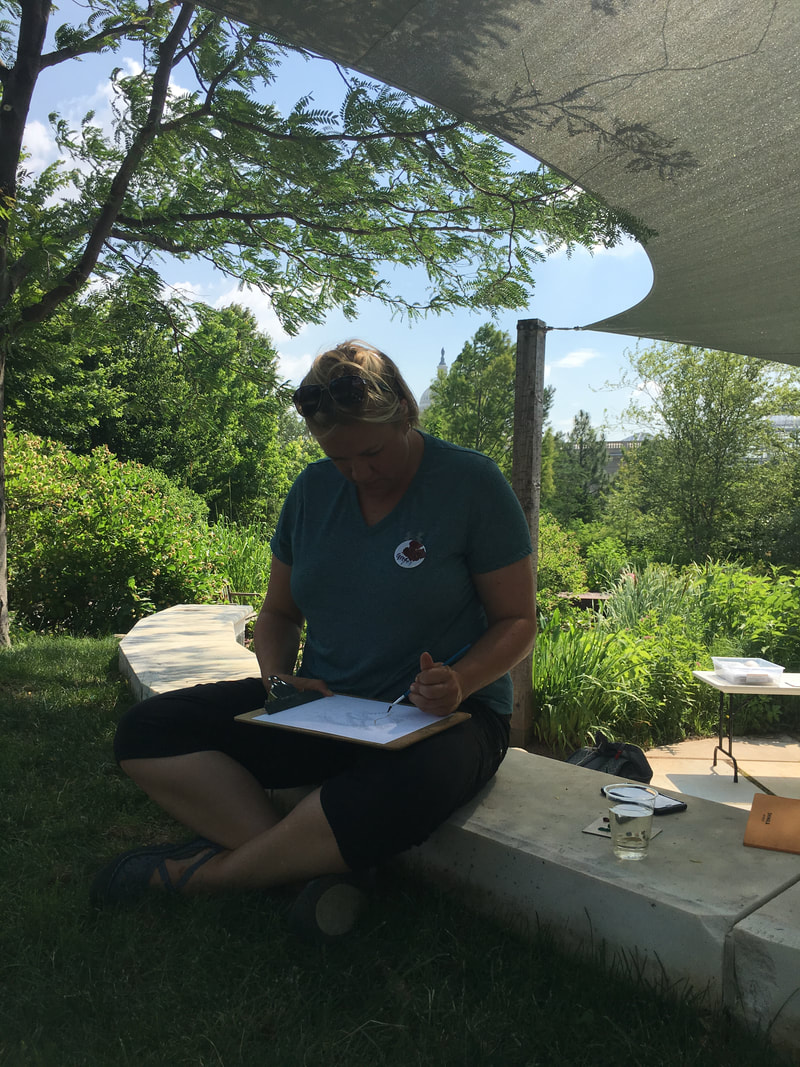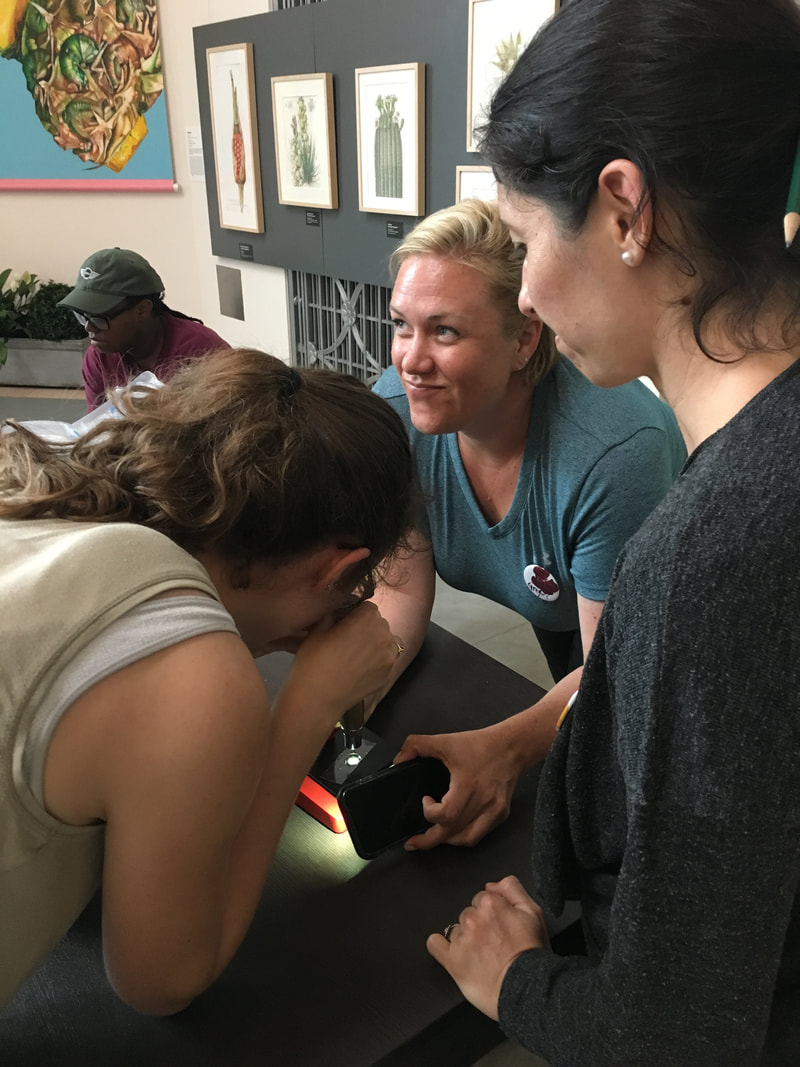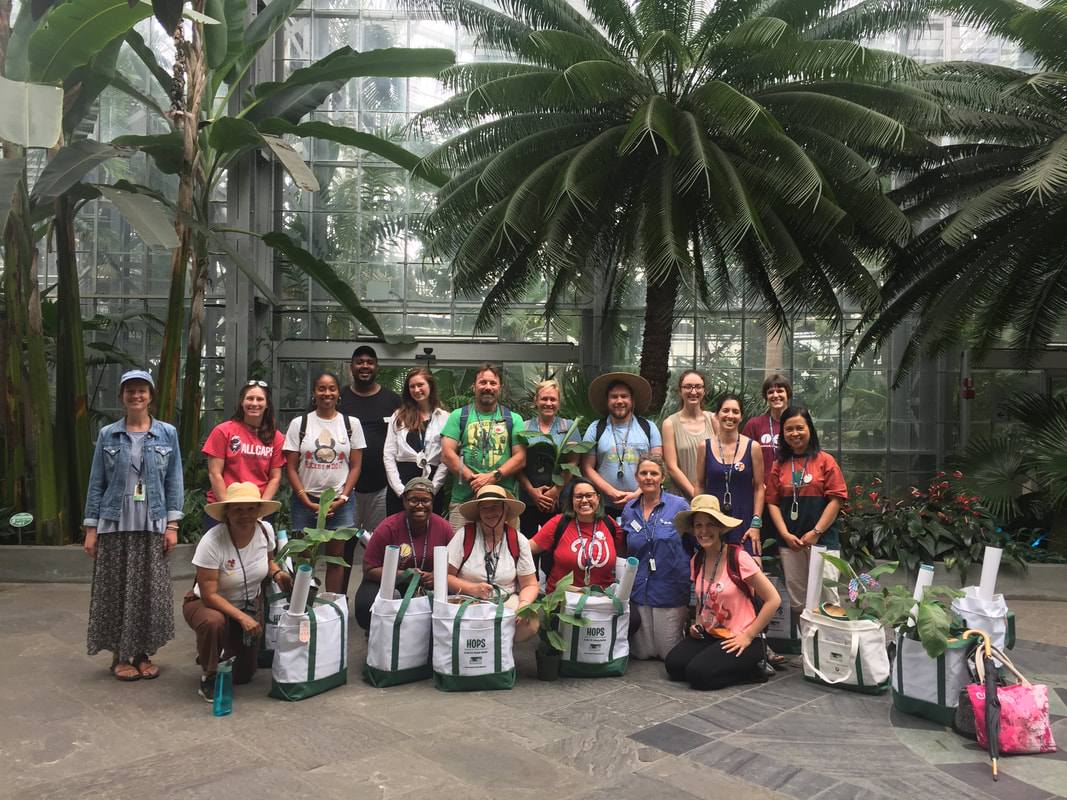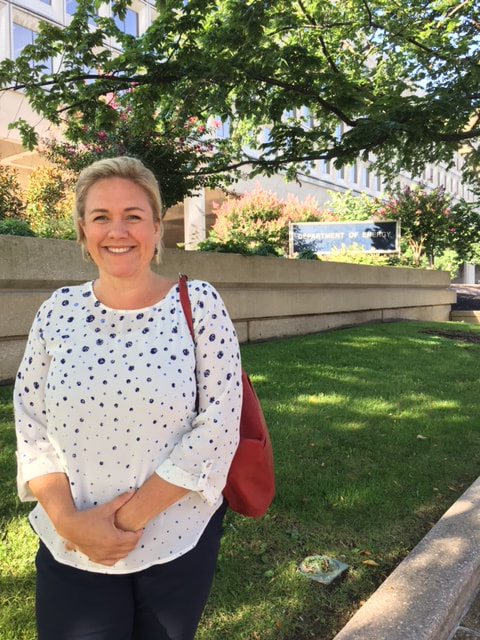|
The United States Botanic Garden has become one of my favorite places to visit while living and “fellowing” in Washington, DC. I find the warm humid air in the and the immediate burst of chlorophyll in the “jungle” to be calming and focusing. To me, the diversity of plant life within the facility serves as a reminder of the importance of protecting and preserving our Earth’s wild places, all within the hustle and bustle of our nation’s capital. George Washington, Thomas Jefferson and James Madison shared the dream of a national botanic garden and were instrumental in establishing the first one on the National Mall in 1820. At that time, 97% of Americans grew their own food. Today, with less than 3% of Americans growing their food, the botanic garden has even more important role of educating the public about the importance of plants to our environment, health and economy. As is commonly claimed, “we need people to fall in love with the environment before we ask them to save it.” The USBG has a wonderful offering of guided walks and public events. I’ve been lucky enough to be able to take advantage of a couple of these including a hour long tour on the Marvelous Morphology of Fruits and a two day teacher workshop called Hands on Plant Science (HOPS). The Marvelous Morphology tour was led by the the Dr. Susan Pell, Deputy Director of the USBG. Dr. Pell has experience as an informal science educator and a clear commitment to botanical education of children and the general public. Since my own academic focus was in the zoological side of biology, I know I have still have a lot to learn about plants. I mean, I can hold my own with plant structure and function, but the fact that bananas are berries and a raspberry isn’t a berry (it’s a drupe) still causes my eyes to cross with botanical vocabulary confusion! On the tour, Dr. Pell was very patient with my questioning, requests for clarification and quest for plant exemplars of the biological processes I teach. I left with motivation to design a lesson in which students are given a cladograms and example fruits from many plant families and then have to figure out of the fruit structures are analogous or homologous. I was also intrigued by Dr. Pell’s career path that lead her to become a director of the USBG. I like to share stories of practicing scientists with my students so they can see that not all people who love science have to become doctors or engineers (it’s not that those are poor career choices, it’s that they aren’t the only career choices). After the official tour had ended, Dr. Pell spent some time with me to share her academic and professional journey. Like everyone I have talked to about this, her path was meandering and opportunistic. Dr. Pell went to a small school as a undergraduate, thinking she would major in chemistry. However, her advisor was a plant taxonomist and she soon switched to a biology major. Being at a smaller school, she was able to do research as an undergraduate, which lead her on a path towards a PhD. For her doctoral work, Dr. Pell studied the evolutionary relationships between plants in the cashew family. She joined the USBG after a 15-year career as a scientist at the New York Botanical Garden and Brooklyn Botanic Garden and a 2-year stint as an AAAS Science and Technology Policy Fellow at the National Science Foundation. Throughout it all, she has maintained a focus on educating people about the importance of plants to the well-being of humankind. My favorite quote from my chat with Dr. Pell was, “Your job is what you spend your life doing, you should like it!” Fact. At Dr. Pell’s suggestion, I attended the two day Hands on Plant Science (HOPS) workshop at the USBG. Each summer, HOPS teaches and trains hundreds of students and teachers, focusing on underserved wards in the surrounding community. The HOPS teacher workshop is designed primarily for elementary school teachers, however I found many of the activities and lesson ideas inspiring and adaptable to high school students. It was great to be around a group of teachers who embraced elementary science education and were excited to learn ways to bring botany into elementary classrooms. The workshop was jam packed with activities, as a completed four lesson modules in two days. The workshop facilitator, Lee Coykendall is the Children's Education Specialist at the U.S. Botanic Garden. Over the past 17 years, Lee has built and expanded the children's education program, making the Garden a rich resource for students and teachers alike. The workshop was split into four modules, each with a different theme. The first module was focused on water and the scientific way of asking questions and wondering about the world. We focused on observation, using our senses for qualitative data and thermometers for quantitative data. We then measured the dissolved oxygen and pH of the water and discussed how these two qualities influence the wellbeing of aquatic organisms. We examined stream water under the microscope (always a hit) and modeled connections between urban water runoff and effects on regional watersheds (interesting factoid: Washington DC is 50% impermeable to water, meaning the buildings, roads and infrastructure can not absorb water from rain, which can lead to urban flooding events). It was fun to witness the other teachers as they explored scientific tools and discovered the joys of hands on science. The focus of the second module were the plant processes of photosynthesis, transpiration and reproduction. We viewed stomata under a microscope and discussed why plants will open and close their stomata. Again, no new scientific learning for me, but it was sure fun to see adults “oooh” and “ahhh” about something they had never seen before! One thing I did learn was about Brix refractometers - so cool! These tools measure the bending of light given the amount of sugar in a solution. We squeezed leafs on the tool and were able to actually get a quantitative measurement of the sugar that had been produced in the leaf by photosynthesis. The options for student inquiry are really wide open with the simple tool. We ended the first day of the workshop with a flower dissection and drawing. I have my students dissect and draw flowers every year, however as soon as I was given a frame for my work it felt much more important! I loved the simple idea of valuing the work of the students by framing the drawings. I was thinking also that it would be fun and educational for students to create anatomically correct flowers using modeling clay. The art theme followed through to day two of HOPS workshop. We went into the National Garden and used water-colors to paint the same subject at a macro and micro level. It was amazing! Everyone went off to their own region of the garden and found a subject for their observations. The macro-micro requirement really encouraged deep observation at multiple perspectives. Again, the art we produced felt valued as we were able to select a frame to display the paintings. We also created mosaic sundials and butterfly pollinators, every engaging activities for teaching kids about ecosystems. The final module was a plant Crime Scene Investigation. Participants were intrigued by a plant being stolen from the observatory and two prime suspects being investigated. Using the tools and knowledge we’d gained during the workshop, it was our job to explore seeds, soil, pollen and nectar to determine which of the two suspects had committed the crime. Luckily, scenario was fiction and the plant had just been misplaced. The workshop was a great way to spend two hot days in Washington, DC. A special thank you to the non-profit National Fund for the United States Botanic Garden for funding the workshop and for a clear commitment to student, and teacher, botanical education. The teacher participants learned a lot and left the workshop inspired and excited to include plant science within their curricular scope and sequence. The gift bag of materials given at the end of the workshop will enable teachers to put these lessons into action, a huge THANK YOU to the National Fund for making that possible. Once again my belief that teachers are incredible people who do great things for kids was affirmed. However, it's the kids in Washington who are the true beneficiaries of the lessons their teachers learned at the Hands on Plant Science workshop.
|
Archives
July 2018
|
I give many of my IB Biology resources away, for the benefit of students and teachers around the world.
If you've found the materials helpful, please consider making a contribution of any amount
to this Earthwatch Expedition Fund.
Did I forget something? Know of a mistake? Have a suggestion? Let me know by emailing me here.
Before using any of the files available on this site,
please familiarize yourself with the Creative Commons Attribution License.
It prohibits the use of any material on this site for commercial purposes of any kind.
If you've found the materials helpful, please consider making a contribution of any amount
to this Earthwatch Expedition Fund.
Did I forget something? Know of a mistake? Have a suggestion? Let me know by emailing me here.
Before using any of the files available on this site,
please familiarize yourself with the Creative Commons Attribution License.
It prohibits the use of any material on this site for commercial purposes of any kind.
